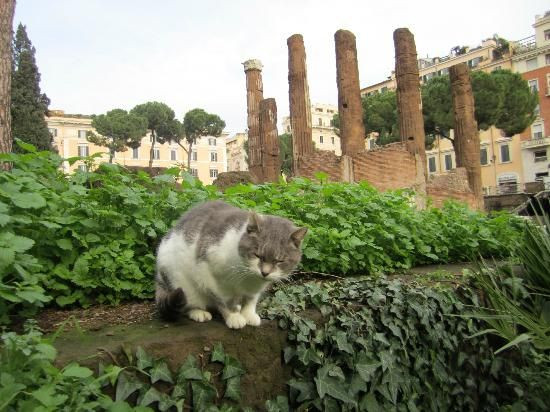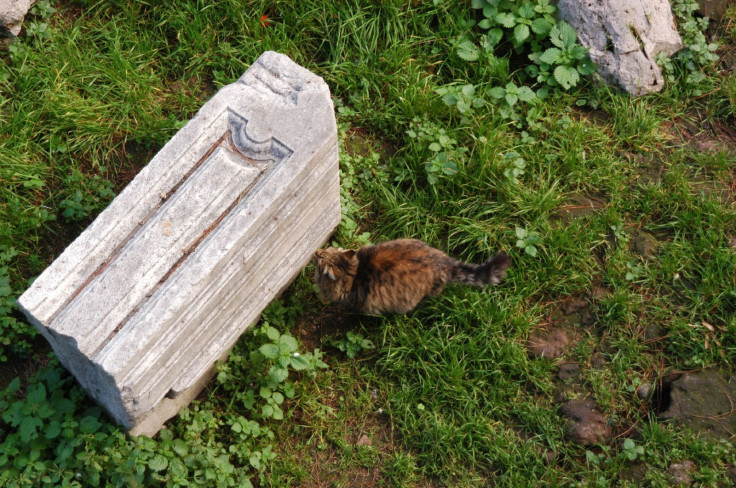Happy Ides of March! Where Caesar Was Killed, Cute Kittens Now Roam [PHOTOS, VIDEO]

History buffs around the world don’t need to be reminded: Friday is the Ides of March. That’s, of course, the day Julius Caesar was murdered. Now we know exactly where it happened, too: a spot in the place known then as Pompey’s Curia and today as Torre Argentina Square, in the dead center of present-day Rome. Spanish researchers found in 2012 the exact place where the Roman dictator and general was stabbed to death on March 15, 44 BC, by plotters intent on saving the Roman Republic from what they considered an imperial menace.
But not many people, either among the more than 10 million tourists who visit the city every year or the 2.6 million Romans, know what happened in the heavily trafficked square, steps from world-famous sites including the Pantheon and the Forum.
“When Romans themselves discover that such an important event for the history of humankind happened under the number 8 tram’s stop, they usually are fascinated,” said archaeologist Gabriele Rossoni, quoted by the Rome-based ADN Kronos news agency.
The reason people know so little about the archaelogical site, first excavated in 1926, is that it isn’t easy to access, sunk as it is below street level. “It’s considered almost like a lesser child,” Rossoni lamented, “because it’s in a trench.”

But there is a group of Rome’s inhabitants that just adores the area’s seclusion, and has even made a home there: the city’s famous, numerous stray cats. (Roman street cats are such a classic figure in Italy that in the Italian dubbing of the Disney film "The Aristocats," the character of the streetwise tomcat Thomas O’Malley takes a Roman accent and becomes “Romeo, er mejo gatto del Colosseo” -- Romeo, the best cat of the Coliseum.)
The abundance of stray cats in the area led two local women to establish a cat sanctuary among the ruins, in 1993. Now the Torre Argentina cat sanctuary has grown into a local institution with a website in English, complete with adorable lolspeak, the inevitable online store selling T-shirts and even the opportunity for long-distance adoption.

What would Caesar himself have thought of all this? History does not record whether he was a cat person (or a dog lover, for that matter.) But he would probably be baffled by the notion of a cat sanctuary. According to a scholarly study of pets in antiquity, cats in Roman households in the first century B.C. were not a common occurrence, and those who kept them did so mainly for practical reasons, to chase away mice.
In later centuries, emperors including Domitian and Caracalla went decidedly big when it came to feline companions, keeping lions and panthers as household pets. Caracalla, the Roman historian Dio Cassius tells us, was probably history’s most extreme cat lover: His pet lion Acinaces shared the emperor’s table, and even his bed. Safe to say, then, that he would have loved to see a cat sanctuary in the city he once ruled.
© Copyright IBTimes 2024. All rights reserved.






















